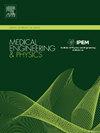Effective cardiac disease classification using FS-XGB and GWO approach
IF 1.7
4区 医学
Q3 ENGINEERING, BIOMEDICAL
引用次数: 0
Abstract
Globally, cardiovascular diseases (CVDs) are a leading cause of death; however, their impact can be greatly mitigated by early detection and treatment. Machine learning (ML)-based algorithms that use features extracted from electrocardiogram (ECG) signals are known to provide good accuracy in predicting various CVDs. Thus, in order to build more effective and efficient machine learning models, it is necessary to extract significant features from ECGs. In order to reduce overfitting and training overhead and improve model performance even more, feature selection or dimensionality reduction is essential. In this regard, the current work uses the grey wolf optimization (GWO) technique to pick a reduced feature set after extracting pertinent characteristics from ECG signals in order to identify five different types of CVDs. On the basis of the feature relevance of the chosen features, a feature-specific extreme gradient boosting approach (FS-XGB) is also suggested. The suggested FS-XGB classifier's performance is contrasted with that of other machine learning techniques, including gradient boosting method, AdaBoost, naïve Bayes, and support vector machine (SVM). The proposed methodology achieves a maximum classification accuracy, precision, recall, F1-score, and AUC value of 98.8 %, 100 %, 99.8 %, 100 %, and 98.8 %, respectively, with just seven optimal features, significantly fewer than the number of features used in existing works.
使用 FS-XGB 和 GWO 方法进行有效的心脏病分类
在全球范围内,心血管疾病(CVDs)是导致死亡的主要原因之一;然而,通过早期检测和治疗可以大大减轻其影响。众所周知,基于机器学习(ML)的算法使用从心电图(ECG)信号中提取的特征,能准确预测各种心血管疾病。因此,为了建立更有效、更高效的机器学习模型,有必要从心电图中提取重要特征。为了减少过拟合和训练开销并进一步提高模型性能,特征选择或降维至关重要。为此,本研究利用灰狼优化(GWO)技术从心电图信号中提取相关特征后,挑选出一个缩小的特征集,以识别五种不同类型的心血管疾病。根据所选特征的相关性,还提出了一种针对特定特征的极端梯度增强方法(FS-XGB)。建议的 FS-XGB 分类器与其他机器学习技术(包括梯度提升法、AdaBoost、奈夫贝叶斯和支持向量机 (SVM))的性能进行了对比。所建议的方法仅使用了七个最佳特征,就实现了最高分类准确率、精确度、召回率、F1-分数和 AUC 值,分别为 98.8%、100%、99.8%、100% 和 98.8%,大大少于现有研究中使用的特征数量。
本文章由计算机程序翻译,如有差异,请以英文原文为准。
求助全文
约1分钟内获得全文
求助全文
来源期刊

Medical Engineering & Physics
工程技术-工程:生物医学
CiteScore
4.30
自引率
4.50%
发文量
172
审稿时长
3.0 months
期刊介绍:
Medical Engineering & Physics provides a forum for the publication of the latest developments in biomedical engineering, and reflects the essential multidisciplinary nature of the subject. The journal publishes in-depth critical reviews, scientific papers and technical notes. Our focus encompasses the application of the basic principles of physics and engineering to the development of medical devices and technology, with the ultimate aim of producing improvements in the quality of health care.Topics covered include biomechanics, biomaterials, mechanobiology, rehabilitation engineering, biomedical signal processing and medical device development. Medical Engineering & Physics aims to keep both engineers and clinicians abreast of the latest applications of technology to health care.
 求助内容:
求助内容: 应助结果提醒方式:
应助结果提醒方式:


